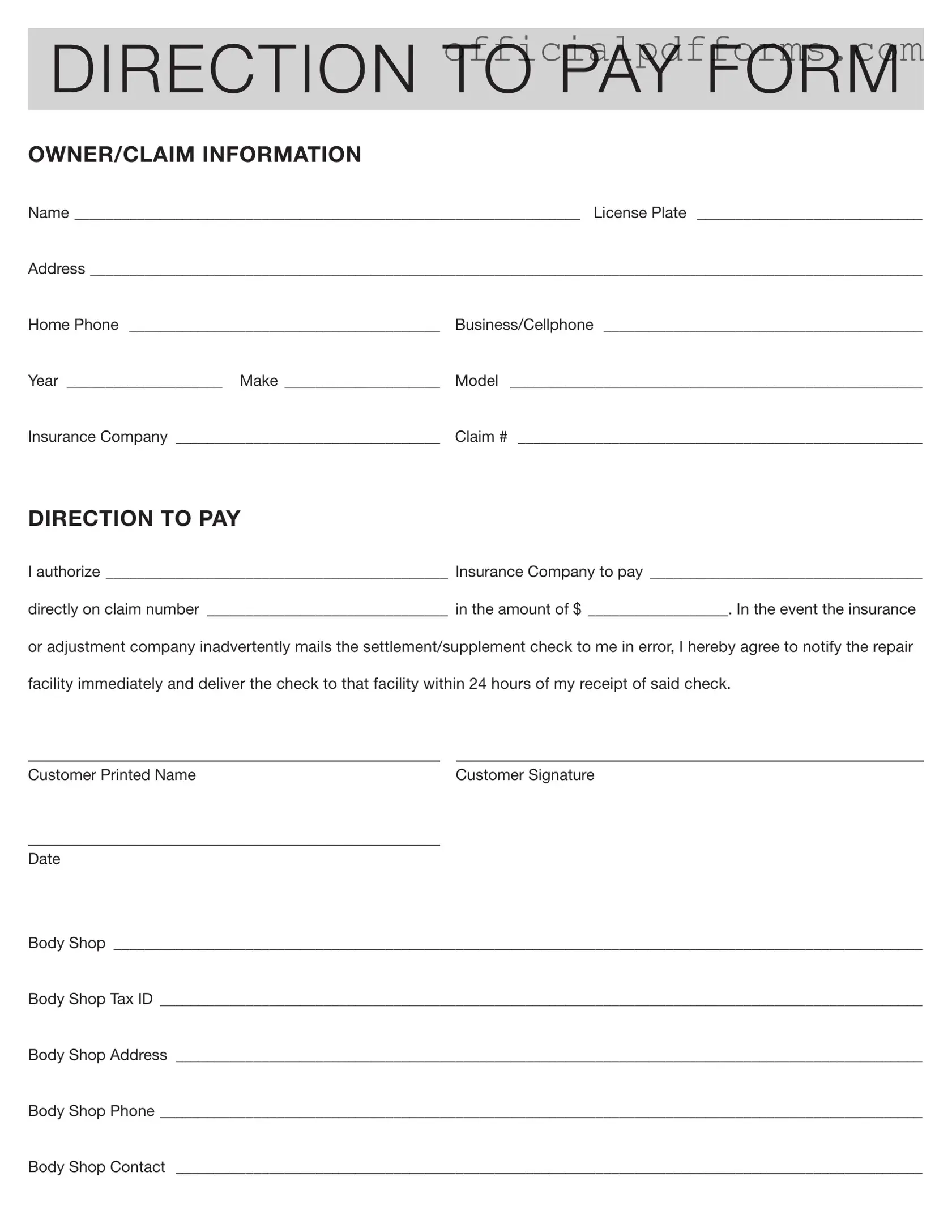The Authorization And Direction Pay form is used to direct an insurance company to pay a specific amount directly to a repair facility for services rendered. This form ensures that the repair shop receives payment promptly, facilitating quicker repairs for the vehicle owner.
This form should be completed by the vehicle owner who has filed a claim with their insurance company. It is essential for anyone who wants to ensure that their repair facility receives payment directly from the insurer. The form requires information about the vehicle, the insurance company, and the repair shop.
The form requires several key pieces of information, including:
-
The owner's name and contact details.
-
The vehicle's license plate number, year, make, and model.
-
The insurance company’s name and claim number.
-
The amount to be paid to the repair facility.
-
The repair shop’s name, address, tax ID, and contact information.
Providing accurate information is crucial to avoid delays in processing the payment.
What should I do if I receive a check from the insurance company?
If the insurance company mistakenly sends the settlement check to you instead of the repair facility, you must notify the repair shop immediately. You are required to deliver the check to the shop within 24 hours of receiving it. This helps ensure that repairs can proceed without unnecessary delays.
Yes, your signature is necessary on the Authorization And Direction Pay form. By signing, you confirm your authorization for the insurance company to pay the specified amount directly to the repair facility. This signature also signifies your agreement to notify the repair shop if you receive the check in error.
Changing the repair facility after submitting the form may complicate matters. If you wish to switch repair shops, you should contact your insurance company to discuss the implications. It may be necessary to complete a new Authorization And Direction Pay form with the updated repair shop's information.
